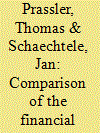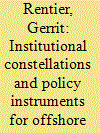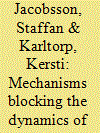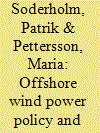|
|
|
Sort Order |
|
|
|
Items / Page
|
|
|
|
|
|
|
| Srl | Item |
| 1 |
ID:
162951


|
|
|
|
|
| Summary/Abstract |
The aim of this study is to assess the offshore wind and solar power and to determine whether the future power supply in Taiwan will be stable. The estimated annual offshore wind and solar power generation for 2030 are 11343 GWh and 11367 GWh, respectively. Based on these results, it appears that the annual power supply can easily help balance the total power demand. However, the power demand is high during the summer peak months, and power generation may be insufficient during peak summer hours by 2030. Specifically, in 2024, the peak hourly percent reserve margin (PRM) in summer will be negative (-0.9%). If the installation of offshore wind turbines and solar panels is delayed, then the problem of insufficiency will be even more severe. However, if the offshore wind and solar photovoltaic projects are completed on schedule, and the first, second, and third nuclear power plants (NPPs) extend their service to 2030, then the hourly PRM could reach 15% during the summer peak hours from 2025 to 2030 and 5–11% in the other years. Moreover, if the fourth NPP opens, then the estimated summer peak hourly PRM would increase by 6–7%.
|
|
|
|
|
|
|
|
|
|
|
|
|
|
|
|
| 2 |
ID:
113420


|
|
|
|
|
| Publication |
2012.
|
| Summary/Abstract |
Offshore wind power is regarded as a crucial renewable energy technology to achieve the ambitious CO2 reduction targets of the EU. However, offshore wind power is not yet competitive with traditional electricity generation technologies, so its sustained development depends on national support policies.
Employing a DCF model, this paper scrutinizes how national regulations and geographic conditions of designated national offshore wind development areas affect profitability. The focus of the analysis is on a set of hypothetical offshore wind park scenarios from five countries (Belgium, Denmark, Germany, France, and the UK). The inclusion of geographic conditions is significant, since water depth and distance to shore influence costs and because available wind resources determine the amount of electricity produced.
The paper's findings are threefold: Firstly, profitability results indicate that currently relevant scenarios in the UK and Germany are most attractive, but that the upcoming UK Round III projects have low attractiveness. Belgium, France, and Denmark follow in the rankings successively. Secondly, there is high variation among scenarios with respect to capital costs-differences amount up to +61%. Lastly, a future scenario assuming technology improvements and learning effects suggests that remuneration levels could be lowered by ~25% by 2020.
|
|
|
|
|
|
|
|
|
|
|
|
|
|
|
|
| 3 |
ID:
112319


|
|
|
|
|
| Publication |
2012.
|
| Summary/Abstract |
The electricity sector has to undergo a large-scale transformation process to reduce the threat of climate change. Wind power has a strategic role to play in this process. This paper makes a preliminary assessment of the types and numbers of engineers required to sustain a large-scale expansion of offshore wind energy in the EU and draws lessons for universities. A variety of competences are required, including (a) deep competences in many fields (electrical and mechanical engineering, but also engineering physics and civil engineering); (b) integrative competences within engineering (e.g., mechanical and electrical engineering) and between engineering and non-engineering fields (e.g., meteorology and logistics). A large number of engineers are required. A rough estimate indicates a need for more than 10 000 new engineers until 2020. The nature and volume of the competences required raise serious questions for the scale and organization of training programmes at universities.
|
|
|
|
|
|
|
|
|
|
|
|
|
|
|
|
| 4 |
ID:
166330


|
|
|
|
|
| Summary/Abstract |
Reorientation of fossil fuel industries towards renewable energy, and the role of changes in organizational environment underlying such processes, have not featured strongly in the study of sustainable energy transitions. We contribute to this important policy issue with a case study of the Norwegian oil and gas industry and its engagement in offshore wind power. We study how the engagement has changed during the period 2007–2016, and whether these changes correspond with developments in the industry’s task and institutional environments. Our study reveals that despite relatively stable institutional environment and continuous growth in offshore wind market over the last decade, the oil and gas industry’s engagement has fluctuated over time. These fluctuations – green flings – took place during two market downturns in the oil and gas market, while during an oil and gas boom the industry reoriented back to this core market. Our results draw attention to the potential importance of market changes for reorientation of fossil fuel industries towards renewable energy. We conclude by discussing the implications of our study for policies seeking to support sustainable energy transitions.
|
|
|
|
|
|
|
|
|
|
|
|
|
|
|
|
| 5 |
ID:
191168


|
|
|
|
|
| Summary/Abstract |
This paper analyses how institutional constellations and their associated mode of risk allocation are reflected in the choice of policy instruments for the promotion of offshore wind power. Using the Varieties of Capitalism framework we expect that governments in Liberal Market Economies (LME) tend to use policy instruments that privatise investments and risk-taking, while those in Coordinated Market Economies (CME) use policy instruments that facilitate investments and shared risk-taking in the earlier, more riskful phase of technological development. We test our expectations through a longitudinal comparative analysis of the use of policy instruments and the deployment of offshore wind power in Denmark, the United Kingdom, Germany and the Netherlands between 1990 and 2020.
|
|
|
|
|
|
|
|
|
|
|
|
|
|
|
|
| 6 |
ID:
126617


|
|
|
|
|
| Publication |
2013.
|
| Summary/Abstract |
Decarbonizing electricity production in the EU may necessitate building new "low-carbon" capacity (excluding nuclear investments) to deliver 3500 TWh by 2050. Offshore wind power has the potential to contribute substantially to fill this gap. Realizing this potential is, however, difficult since deployment offshore does not constitute a simple diversification by the onshore wind turbine industry to a new segment. This paper identifies factors obstructing the development of the northern European innovation system centered on offshore wind power, specifies a set of associated policy challenges and discusses various policy responses.
|
|
|
|
|
|
|
|
|
|
|
|
|
|
|
|
| 7 |
ID:
090081


|
|
|
|
|
| Publication |
2009.
|
| Summary/Abstract |
In recent years, the wind power sector has begun to move offshore, i.e. to use space and good wind speeds on the open sea for large scale electricity generation. Offshore wind power, however, is not just technologically challenging but also a capital intensive and risky business that requires particular financial and organizational resources not all potential investors might have. We therefore address the question, what impact offshore wind power may have on ownership and organizational structures in the wind power sector. We compare on- and offshore wind park ownership in Denmark, the UK and Germany. The analysis shows that offshore wind power in all three countries is dominated by large firms, many of which are from the electricity sector. In Denmark and the UK, also investors from the gas and oil industry play an important role in the offshore wind business. This development represents a major shift for countries such as Germany and Denmark, in which the wind power sector has grown and matured on the basis of investments by individuals, farmers, cooperatives and independent project developers. The structural changes by which offshore wind power is accompanied have consequences for turbine manufacturers, project developers, investors, associations and policy makers in the field.
|
|
|
|
|
|
|
|
|
|
|
|
|
|
|
|
| 8 |
ID:
107636


|
|
|
|
|
| Publication |
2011.
|
| Summary/Abstract |
Public support for electricity generation from renewable energy sources is commonly funded by non-voluntary transfers from electricity consumers to producers. Apparently, the cost-effective disposition of funds in terms of induced capacity deployment has to be regarded a key criterion for the success of renewable energy policy.
Grid connection costs are a major cost component in the utilization of offshore wind energy for electricity generation. In this paper, the effect of different attribution mechanisms of these costs on overall cost-effectiveness from consumers' perspective is analyzed.
The major result of this investigation is that an attribution of grid connection costs to grid operators - as against to generators - leads to a smaller producer surplus and, hence, to lower transfer costs for electricity consumers. Applying this approach to the deployment of UK Rounds II and III offshore wind farms could lead to annual savings of social transfers of £1.2b and an equal reduction of producer surplus. This amount would be sufficient to finance the deployment of additional 10% of the capacity under consideration.
|
|
|
|
|
|
|
|
|
|
|
|
|
|
|
|
| 9 |
ID:
103596


|
|
|
|
|
| Publication |
2011.
|
| Summary/Abstract |
The main objective of this paper is to analyze the role of policy support schemes and planning systems for inducing offshore wind power development in Sweden. Specifically, it highlights the different types of economic, political and planning-related conditions that face offshore wind power investors in Sweden, and provides brief comparisons to the corresponding investment conditions in Denmark, Norway and the UK. The analysis shows that in Sweden existing policy incentives are generally too weak to promote a significant development of offshore wind power, and the paper provides a discussion about a number of political and economic aspects on the choice between different support schemes for offshore wind in the country. Swedish permitting and planning procedures, though, appear favorable to such a development, not the least in comparison to the corresponding processes in the other major offshore wind countries in Europe (e.g., the UK). On a general level the paper illustrates that the success and failure stories of national offshore wind policies and institutions cannot be easily transferred across country borders, and the analysis shows that both the political and the legal frameworks governing the investment situation for offshore wind farms in Denmark, Norway, Sweden and the UK differ significantly.
|
|
|
|
|
|
|
|
|
|
|
|
|
|
|
|
| 10 |
ID:
125704


|
|
|
|
|
| Publication |
2013.
|
| Summary/Abstract |
Demand for electricity in China is concentrated to a significant extent in its coastal provinces. Opportunities for production of electricity by on-shore wind facilities are greatest, however, in the north and west of the country. Using high resolution wind data derived from the GEOS-5 assimilation, this study shows that investments in off-shore wind facilities in these spatially separated regions (Bohai-Bay or BHB, Yangtze-River Delta or YRD, Pearl-River Delta or PRD) could make an important contribution to overall regional demand for electricity in coastal China. An optimization analysis indicates that hour-to-hour variability of outputs from a combined system can be minimized by investing 24% of the power capacity in BHB, 30% in YRD and 47% in PRD. The analysis suggests that about 28% of the overall off-shore wind potential could be deployed as base load power replacing coal-fired system with benefits not only in terms of reductions in CO2 emissions but also in terms of improvements in regional air quality. The interconnection of off-shore wind resources contemplated here could be facilitated by China's 12th-five-year plan to strengthen inter-connections between regional electric-power grids.
|
|
|
|
|
|
|
|
|
|
|
|
|
|
|
|
| 11 |
ID:
110377


|
|
|
|
|
| Publication |
2011.
|
| Summary/Abstract |
This article examines how power authorities could facilitate and manage offshore wind power development in US coastal waters. The power authority structure is an American 20th century institution for managing energy resources-a form of a public authority or public corporation dedicated to creating, operating and maintaining electric generation and transmission infrastructure. Offshore wind power is characterized by high capital costs but no fuel costs and thus low operating costs. Therefore a power authority, by virtue of its access to low-cost capital and managerial flexibility, could facilitate offshore wind power development by reducing financial risk of developing and lowering debt payments, thus improving the risk profile and lowering the cost of electricity production. Additionally, power authorities can be made up of multiple states, thus opening the possibility for joint action by neighboring coastal states. Using primary and secondary data, we undertake an in-depth analysis of the potential benefits and shortcomings of a power authority approach.
|
|
|
|
|
|
|
|
|
|
|
|
|
|
|
|
| 12 |
ID:
109683


|
|
|
|
|
| Publication |
2011.
|
| Summary/Abstract |
Offshore wind offers a very large clean power resource, but electricity from the first US offshore wind contracts is costlier than current regional wholesale electricity prices. To better understand the factors that drive these costs, we develop a pro-forma cash flow model to calculate two results: the levelized cost of energy, and the breakeven price required for financial viability. We then determine input values based on our analysis of capital markets and of 35 operating and planned projects in Europe, China, and the United States. The model is run for a range of inputs appropriate to US policies, electricity markets, and capital markets to assess how changes in policy incentives, project inputs, and financial structure affect the breakeven price of offshore wind power. The model and documentation are made publicly available.
|
|
|
|
|
|
|
|
|
|
|
|
|
|
|
|
| 13 |
ID:
174971


|
|
|
|
|
| Summary/Abstract |
Offshore wind power is one of the fastest growing renewable energies and the Brazilian coastline with nearly 9650 km has a great wind potential. Even though offshore oil and gas regulation is well established, this is still unknown for offshore wind power. This article aims to propose a regulatory framework for development of offshore wind power in Brazil. A literature review and case studies were conducted on offshore wind regulation in Denmark, United Kingdom and Germany and on Brazilian offshore oil and gas. The framework involves three macro phases: Pre-development, Development and Operation and Post-Operation. As Brazil is a new market, the use of two concession regimes is proposed: open door and tender. The framework proposes a feed-in tariff contracted in the tender with readjustments by the General Index of Market Prices. The required licenses, authorized by ANEEL, IBAMA and COMAER are: area concession, simplified license for studies, marine and air collision, cable laying, construction and operation and pre-decommissioning. The research concludes that the legal framework should consider the entire life cycle of wind farm in order to avoid future regulatory problems such as those that occurred with the offshore oil and gas, which did not consider the decommissioning stage.
|
|
|
|
|
|
|
|
|
|
|
|
|
|
|
|
| 14 |
ID:
166441


|
|
|
|
|
| Summary/Abstract |
Offshore wind power development is expected to play an important role in meeting the EU climate targets. To integrate offshore wind power, advanced offshore infrastructures such as meshed grids are suggested to optimise the grid development. Meshed offshore grids refer to integrated offshore infrastructure where offshore wind power hubs are interconnected to several countries as opposed to radial connection linking the wind farm to one single country and market. However, development of meshed architectures is hindered by the legal and regulatory barriers.
|
|
|
|
|
|
|
|
|
|
|
|
|
|
|
|
| 15 |
ID:
103597


|
|
|
|
|
| Publication |
2011.
|
| Summary/Abstract |
The British offshore windfarm programme presages the emergence of Britain as more of a leader than a laggard in renewables, the latter being the status it has hitherto endured in comparison to countries such as Denmark, Germany and Spain. Britain looks increasingly likely to exceed 20% of electricity being supplied from renewable energy by 2020, provided there continues to be adequate financial incentives for renewable energy. This turnaround is associated with increased British concerns about energy dependence on imported natural gas as well as pressure from EU legislation. However there are many planning pressures that countervail the drive for offshore wind power. British planning policy on offshore wind is distinctive (compared to other EU states) for its pragmatic, 'criteria based', approach that appears to favour offshore wind power development. The extent of the British offshore wind power programme is likely to depend heavily on consumer reactions to price increases caused by the offshore wind power programme.
|
|
|
|
|
|
|
|
|
|
|
|
|
|
|
|
|
|
|
|
|